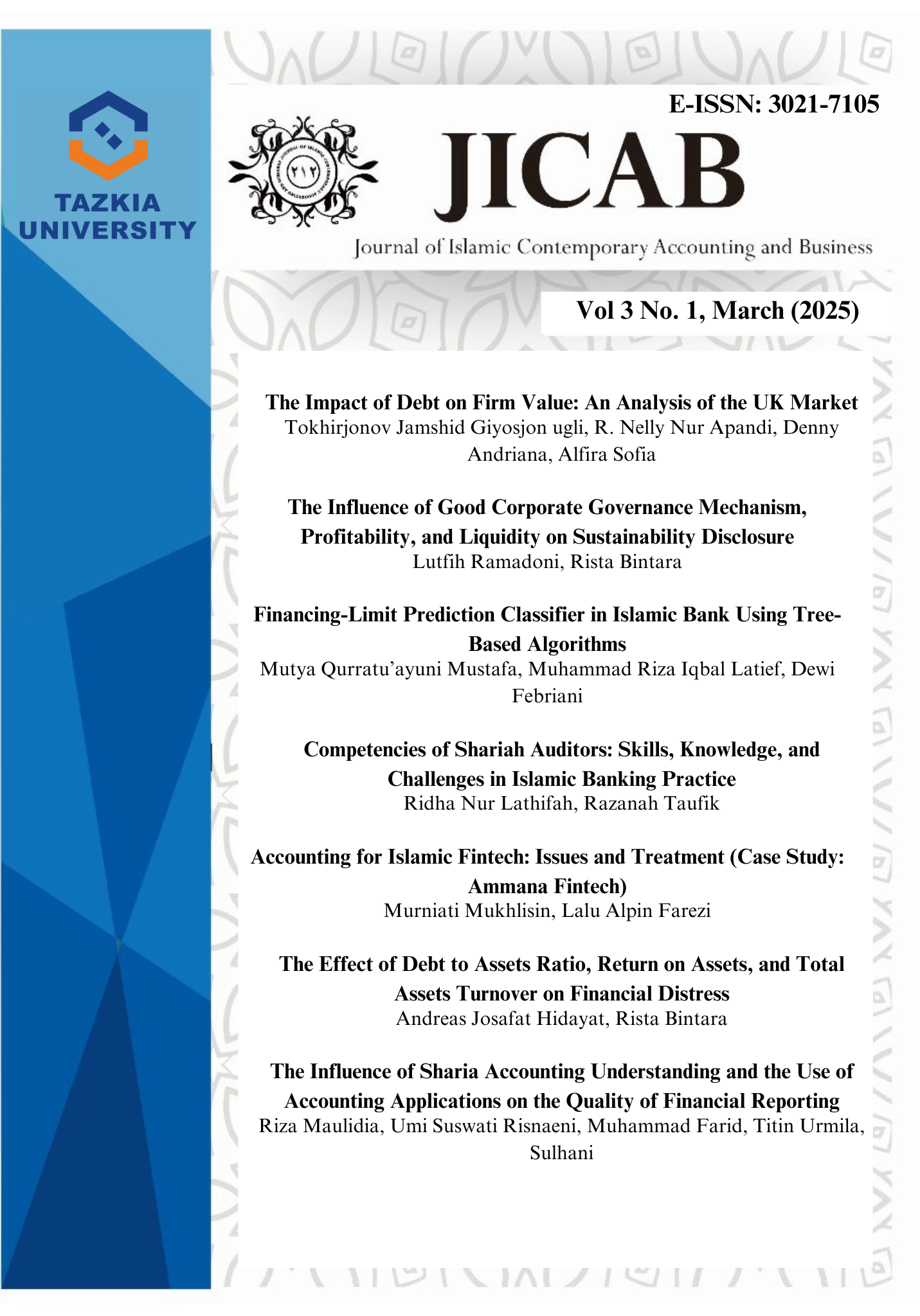Financing-Limit Prediction Classifier in Islamic Bank Using Tree-Based Algorithms
DOI:
https://doi.org/10.30993/jicab.v3i1.520Keywords:
Islamic Bank, Financing-Limit Prediction, Machine learning, Decision Tree, Random ForestAbstract
Islamic banks are one of the financial institutions that has been proven to be the catalyst to end extreme poverty in the world. However, amid the massive development of Industry 5.0, research about technology adaptation in Islamic banks is still considered rare. The aim of this study is to develop a technology that will help Islamic banks in making their financing decision more efficient. By using the current outstanding financing data in an Islamic bank, this study proposes a machine learning algorithm that could predict a financing limit based on customer classification. The tree-based learning algorithms used to build the algorithm have shown impressive results. The results show that the basic algorithm which is the Decision Tree gives 86% prediction accuracy. The algorithm is then improved by using the Random Forest algorithm. The Random Forest algorithm gives 91% prediction accuracy which significantly improves the base learning algorithm. Future research in this area is needed as the need to implement sophisticated technology is prominent in making Islamic banking more accessible across the globe.
Downloads
Published
Issue
Section
License
Copyright (c) 2025 Financing-Limit Prediction Classifier in Islamic Bank Using Tree-Based Algorithms © 2025 by Mutya Qurratu'ayuni Mustafa, Muhammad Riza Iqbal Latief, Dewi Febriani is licensed under CC BY-NC 4.0

This work is licensed under a Creative Commons Attribution-NonCommercial 4.0 International License.
Journal of Islamic Contemporary Accounting and Business © 2023 by Tazkia Islamic University College is licensed under CC BY-NC 4.0
Authors who publish with this journal agree to the following terms:
- Authors retain copyright and grant the journal right of first publication with the work simultaneously licensed under a Creative Commons Attribution License that allows others to share the work with an acknowledgment of the work's authorship and initial publication in this journal.
- Authors are able to enter into separate, additional contractual arrangements for the non-exclusive distribution of the journal's published version of the work (e.g., post it to an institutional repository or publish it in a book), with an acknowledgment of its initial publication in this journal.
- Authors are permitted and encouraged to post their work online (e.g., in institutional repositories or on their website), as it can lead to productive exchanges, as well as earlier and greater citation of published work (See the Effect of Open Access).












